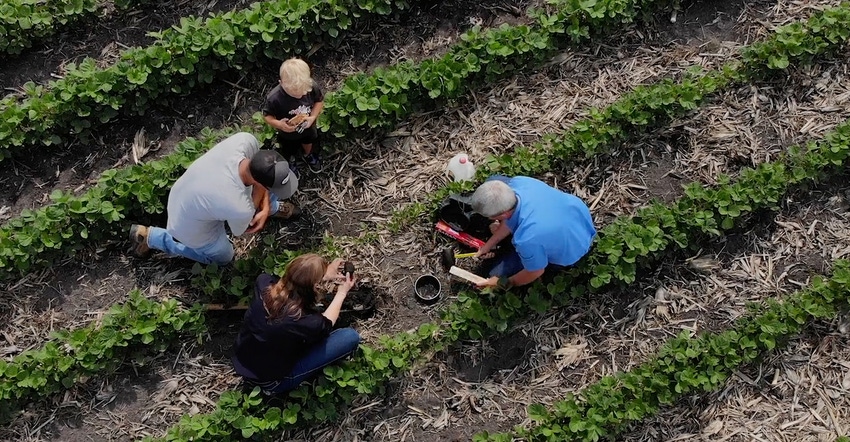March 2, 2021

Editor’s note: This is the fourth of seven stories on the relationship between landowners and tenants, and how soil health goals can be achieved more efficiently if both parties are on the same page.
Most of the land conservation farmer Louis “Louie” Nigg rents is from family members, but his use of soil health practices is helping him farm other land, too, including parts of the Lake Traverse Indian Reservation.
Nigg is a family man. Most of the land he farms in Roberts County in northeast South Dakota is rented from family. The farmstead he calls home was established in 1910, and the home farm was tended by his father before him and his grandfather before that, after it was homesteaded by his great-grandfather. That history, and the real possibility of leaving the farm to the next generation, is part of what moves Nigg to take care of it.
Runs in the family
“My dad was on the local conservation board, and he received a conservationist of the year award in the mid ’80s,” Nigg says. “I believe my grandfather received the same award. It’s something maybe someday I can receive — to have the plaques on the wall so my kids can have something to challenge them to try and do better than what I’m doing.
“I want them to watch me so I can pass on what I learned from my dad, what he learned from his dad on how to care for the land,” he adds. “It's a little more work when they're with you, but you're teaching them. And that's probably the best part of farming, is just having those two little guys with me and being their mentor.”
That kind of thinking is what led to Nigg’s use of no-till, cover crops and other practices that build soil health on his farm — and that thinking spills over onto all the farmland he rents.
“Most of the land I farm is rented from family, and they understand cover crops and they're very understanding in helping me make their land better,” Nigg says. “But I also rent land from non-family members, and they're just as excited to see the cover crop planted on their property. I brought them out into the fields, and they were pretty impressed with how different their soil looked in just a few years of me farming it, versus what it looked like with their previous tenants.”
Policy to conserve soil
That thinking mirrors the thoughts of the Sisseton Wahpeton Oyate tribal council when the group developed a new policy for tenants who bid to renew contracts to rent tribal land.
Lorne Aadland, tribal liaison with the USDA Natural Resources Conservation Service in Sisseton, S.D., says the tribal council’s policy strongly encourages renters to operate in a soil-health-friendly way. “The leasing policy encourages no-till, crop rotation, cover crops and livestock grazing on those cover crops,” he says. “And they’d like to see a soil test every third year. If organic matter is in an upward trend, that tenant is pretty much going to continue leasing that land.”
Nigg rents from the Sisseton Wahpeton Oyate tribe and the Bureau of Indian Affairs, and farms it the same way he farms his own. Nigg says it’s an economic decision as well as something that’s good for the soil long term. “If you've got good soil health, typically that makes higher yields. So if I as a farmer can make higher yields, I'm going to make more money in the long run. If I'm making more money, they're going to make more money, too.”
Betts writes from Johnston, Iowa.
About the Author(s)
You May Also Like




